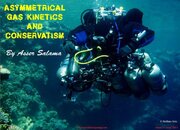Devon, Well I am not sure what you are driving at? I was explaining the approach that I was taught in relation to the question asked and not looking for a critique on the system and approach I was taught.
Not driving at anything - just enjoying a discussion

It's odd, because I've never heard of the practice of 'triplicate redundancy' before - either stated in agency training materials, or as an operating practice advocated by any experienced technical diver.
Properly configured doubles/sidemount, plus effective gas planning and management, offers sufficient safe-guard/fail-safe against all reasonable and foreseeable problems.
I'm merely questioning what 'need' you feel there is for an additional pony/bail-out? i.e. risks that aren't already effectively mitigated by existing equipment configuration and diving protocols/procedures?
For my part I have managed my deploying my pony, a large slr camera, while towing a float and doing a hover at 30 feet during a night dive. I have had no issue with task loading or equipment management.
If we assume a dive will always transpire under the best case circumstances, then equipment configuration and dive protocols become pretty much irrelevant. However, given a worst case scenario - most experienced technical divers will testify that simplicity of equipment/protocol becomes a potential life-saver.
My only advice is to put it to the test and see for yourself. Try running through some rescue scenarios etc etc. Try dealing with multiple simulated failures/issues. See how you make out.
It's very easy to fall into the mindset of "add..add...add". We conduct dives, nothing tests our premise, and we feel we are 'safer'. It's an illusion.
As for side mount divers, again I cannot comment and was only pointing out what I felt was a shortcoming of the system.
Which, to be fair, is based upon a lack of understanding of how the system is taught.




